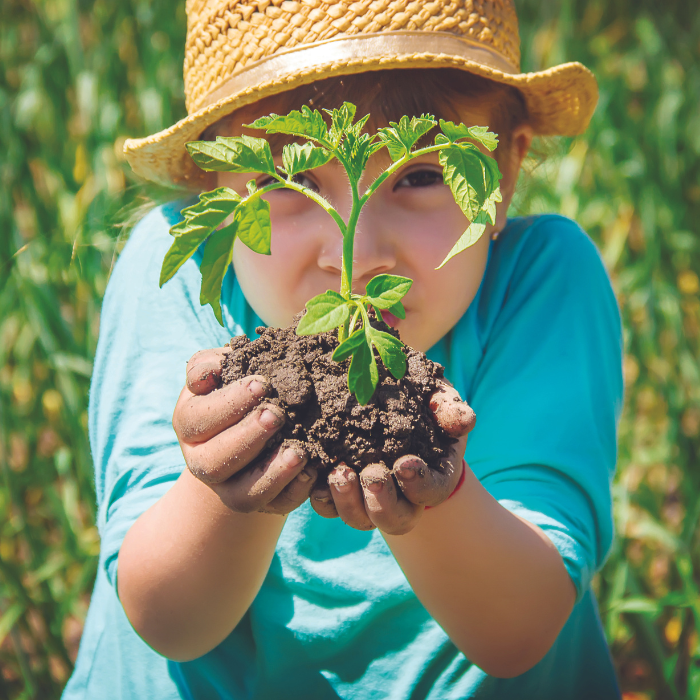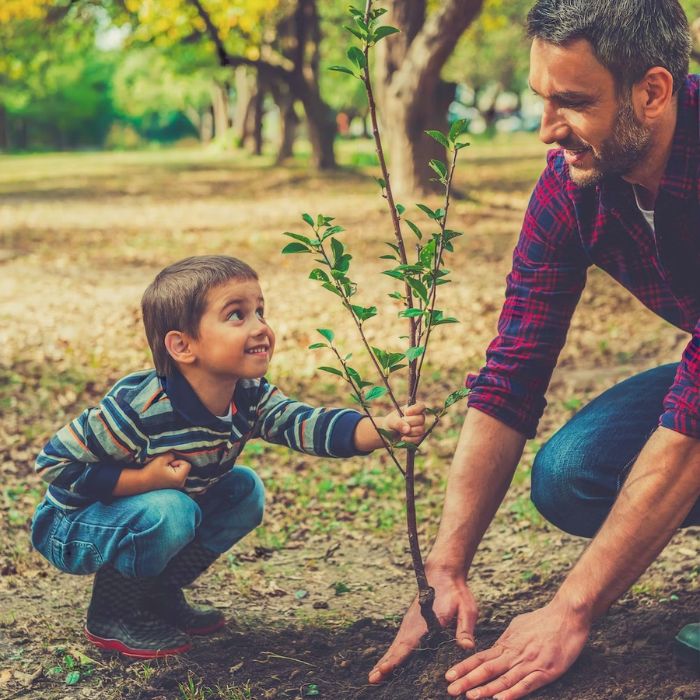
The native plant life in NZ is ancient and unique, having evolved in isolation for millions of years. Here are some ideas for inspiring the next generation of New Zealanders to love and care for our living treasures.
get out and about
There’s nothing like becoming a mother to gain a new perspective on things. Once an avid backcountry hiker, having children meant becoming re-acquainted with areas a little closer to home – somewhere we could reach and explore before the mid-day nap.
Walking at a toddler’s pace forced me to look around and rediscover why I loved these places so much – the plant communities that defined a habitat – a wetland, a forest, the mountains. Exploring things at junior’s level meant taking notice of the little things: the patterns in tree bark, a bird sucking on nectar, a little spider hanging off a leaf.
Visit places where different plants grow for a wilderness plant adventure. DOC has produced a brochure ‘Time in the Wild with Children’, which gives some general helpful hints. For more ideas, visit www.doc.govt.nz.
some special plant places to visit around New Zealand
Waipoua Forest in Northland is home to the Kauri, one of the world’s mightiest trees. The largest Kauri reach more than 50 metres tall, have trunk girths up to 16 metres and sprang from seeds as long as 2,000 years ago. A five minute walk to view the largest living kauri – Tane Mahuta is signposted on SH12 – suitable for wheelchairs and buggies.
Karamea at the top of the South Island’s west coast is a tropical paradise. The Nikau Walk at the start of the Heaphy Track can be walked in either a 20 or 40 minute loop trip, exploring an area of Nikau palms and lush sub-tropical plant life.
Peel Forest near the mid-Canterbury township of Geraldine is famous for its huge fern diversity – over 68 species can be found here. Starting from Te Wanahu Flat, two walks are good for families – the Fern Walk is 1½ hours long, and for smaller children or children in buggies, Big Tree Walk is a 30 minute round trip.
Tiritiri Matangi lies four kilometres off the coast of the Whangaparaoa Peninsula and is one of the most successful conservation projects in the world. Since 1984, the island has been transformed by a community habitat restoration programme.
Crimson Trails – Project Crimson has produced a series of brochures that highlight the best places to walk and see Rata and Pohutukawa – the NZ Christmas Tree – from Auckland and Coromandel in the North Island, to Otago in the South Island. Check out their website for printouts: www.projectcrimson.org.nz
Get learning
There are lots of things you can do to make a walk a little more interesting for children, while secretly teaching them something at the same time! How about a scavenger hunt, where children are challenged to find as many different shaped leaves as possible. Get them on their hands and knees beneath a tree to find as many “clues” as they can to identify it – flowers, fruit or dropped leaves. Andrew Crowe’s ‘Lifesize Guide to Native Trees’ (Penguin Books NZ; 1997) is an excellent resource book for this.
Older children can ‘make friends with a tree’ – working in pairs, one person is blindfolded and led to a tree. They have to get to know it by touch, and then led away. Then remove the blindfold and see if they can find their tree! Or perhaps adopt a tree – pick a tree near home and visit it in different seasons to see how it changes.
get creative
Plant-inspired artwork could be a great outside or inside activity. Try bark rubbing – fasten a piece of paper against tree trunk and use wax crayons or a soft pencil to rub and get an outline of the bark pattern. Compare different patterns.
Or leaf rubbing – put a leaf under paper and rub over the top with wax crayon until the shape appears. Spatter-prints are effective – arrange leaves on the paper, dip an old toothbrush into paint. Use a stick to rub the bristles so fine spatters of paint go onto the paper around the leaves. Lift the leaves to reveal their shadows.
Activities taken from: In Touch – nature awareness activities for teachers, leaders and parents; Cathy Macfie (Longman Paul; 1987).
get growing
Being inquisitive by nature, most children love gardening because there is so much to discover, both above and below ground. They also enjoy using different tools and getting dirty. By encouraging your children to garden, you will increase their awareness of their environment. Build on a child’s curiosity and enthusiasm for doing something new by experimenting with growing plants and find out how they work. You might even get them interested in eating vegetables too!
Children under-6 years will enjoy doing chores such as filling pots with compost and watering plants. You could start them off with a large pot or window-box to care for. Have it somewhere they walk past every day such as at the front door, with their own watering can handy, so giving the plants a drink can become part of
everyday chores.
Older children can have their own patch in the garden to plant, work in and care for. For gardening to be enjoyable for children, it is important that they get a good result fairly quickly, so plants should be chosen for speed of growth and reliability.
Jorge Santos at DOC’s Motukarara Conservation Nursery in Canterbury recommends cabbage tree and five-finger. “Both are easy to germinate and grow from seed and they have names that appeal to children,” says Jorge.
“Plants like flax can be tricky to grow from seed but once reaching seedling stage, will grow fast with care and attention,” he says.
Flax can offer so much joy once the plant is bigger too – their striking flowers attract nectar-feeding birds like tui and bellbirds (and then dry off to make good stalks for sword fights, which boys particularly like); and the leaves can be harvested and used for simple weaving projects.
get active
Finally, find out what’s happening in your local community that you and your children can get involved in. Plenty of local reserves rely on volunteers to get big planting projects done and, of course, there’s all the ongoing care and attention too. Many schools also have garden projects, and if yours doesn’t, how about suggesting they start one? Have your children join an organisation, club or group such as the Kiwi Conservation Club or your museum’s Discovery Centre, as they provide resources and opportunities for learning, field trips and activities that you might not otherwise have thought of.
Sarah Mankelow is a conservation awareness officer for the Department of Conservation in Christchurch, and mother of two nature-loving children.








